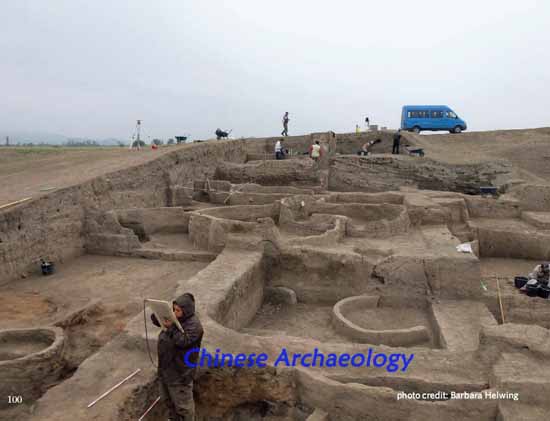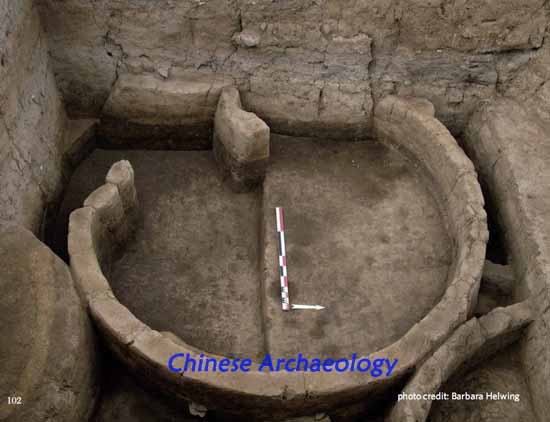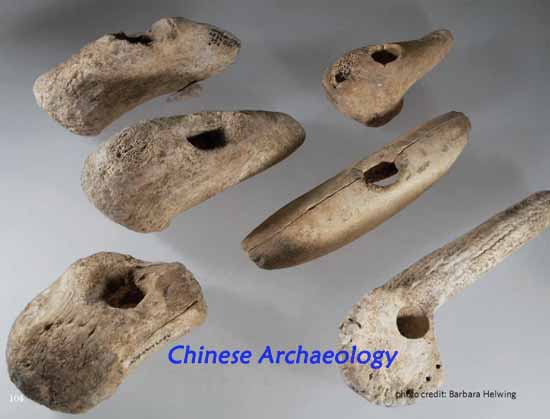Ancient Kura 2010-2012: Human-Environment Interaction in Neolithic Southern Caucasia
The “Ancient Kura” Project investigates human – environment interaction in Southern Caucasia from the beginning of sedentism to the Bronze Age, roughly 6th to 3rd millennium BCE. During this period, southern Caucasia witnessed the beginning of a rich Neolithic occupation in the 6th millennium BCE and the emergence of elite burials under visible mounds since the 4th and throughout the 3rd millennium BCE. In between, evidence remains rare and reasons for this are poorly understood. Project "Ancient Kura" combines the generation of primary field research data from excavation and landscape archaeology with multi-disciplinary high-end archaeological science in a diachronic and comparative perspective in order to understand human and environment-related factors responsible for this pattern. The project anchors on three archaeological sites aligned along the middle course of the Kura River – Aruchlo in eastern Georgia, Menteshtepe in the western and Kamiltepe in the southern Azerbaijan Republic. All three sites exhibit 6th millennium BCE settlement occupation, subsequent periods are attested at Mentesh and on sites discovered during the landscape study around Aruchlo and Kamil. The presentation will focus on the 6th millennium BCE comparative evidence from project "Ancient Kura". This is further augmented by glimpses at recent findings from Kamiltepe, the southeastern column of the research project, where the presenter conducts her research.

From west to east along the Kura River, the ancient environment around the sites gradually changed from a dense cover with mixed deciduous forest to an open shrub vegetation and steppe landscape. The wild fauna reflects this shift through a predominance of red deer in the west versus gazelle in the east. The easternmost site Kamiltepe furthermore attests to the usage of a wide range of aquarian resources, including Caspian Sea sturgeon that may have been caught in the Kura River. Plant economy at all three sites relied on the cultivation of cereals, mainly barley and to a lesser extent naked wheat, and of lentils. Flax may have been used for oil or textile production. Animal economy is based on domesticates, mostly sheep/goat, lesser cattle and pig, while hunting seems to have been of little economic importance. At Kamiltepe, a specialized seasonal hunt for migratory birds is attested. All three sites made ample use of natural mineral resources in their immediate neighborhood. Clay for ceramic production was gained locally, as were varieties of stone used for ground stone industry. The proximity and accessibility of obsidian sources of the Lesser Caucasus is reflected in almost 99% of obsidian in the western sites chipped stone assemblages, as opposed to only around 50% in the eastern sites.
Although sharing an environmental continuum and a similar set of domesticates as basis of subsistence, the three anchor sites exhibit important differences in a comparative perspective. The western sites consist of groups of round-house compounds continuously renewed, which led to tell formation in the long run; the eastern sites so far exhibit rectangular or special architecture and seem to have shifted location regularly. A comparison of data from intensive survey around the three focus sites yielded a map with densely spaced Neolithic occupations around Kamiltepe, as opposed to Aruchlo as a large longterm occupation within a small cluster of sites, but with hardly any short-term occupations around. Ceramic production in the west used mineral tempered clay for monochrome pottery with plastic decoration, while the eastern sites produced ceramic with organic temper and with elaborate painted pottery. Significant differences in chipped stone industries and ground stone tools, bone tool industry and jewelry production reflect the integration into different spheres of interaction: the western sites, located close to the obsidian sources of the Lesser Caucasus volcanoes, seem to have been in contact with regions further to the southwest, in eastern Anatolia, while the eastern sites exhibit links with the Iranian plateau and the south Caspian littoral.

Within the eastern site cluster around Kamiltepe in the Mil Plain, two outstanding sites are currently under closer investigation: at Kamiltepe, a large round mudbrick construction with adjacent architecture has been uncovered. This „platform“ could represent a special purpose structure, related to non-daily social activities like ritual gatherings. At neighboring site MPS 4, a henge system of three concentric ditches was discovered. Both monuments are so far unique in the southern Caucasus and express an emphasis on group activity in modifying the visible landscape as an important aspect in the neolithization of the southern Caucasus.

Through the combination of three regional microhistories with a bird's eye perspective onto the prehistoric settlement history of the southern Caucasus, project "Ancient Kura" has opened new insights into cultural choices and environmental dynamics driving the neolithization process in this region. We hope to extend these studies further by implementing a focus on aspects of mobility and exchange between the three areas in the near future.
Barbara Helwing (German Archaeological Institute)
Biographical Sketch
Barbara Helwing holds a PhD in Prehistoric archaeology from Heidelberg University and has taught several years at Bilkent University in Turkey before she moved to the German Archaeological Institute as Head of its Tehran Branch. She is also a private lecturer at the Institute for Ancient Near Eastern Studies at the University of Tuebingen. Her research interests lie with the emergence of early societies in Western Asia, from the beginning of sedentism to the emergence of early states. A second focus of interest is with ancient technologies, especially archaeometallurgy, and their influence on early societies. She has conducted fieldwork and interdisciplinary research projects in seven countries, most importantly at Nevali Cori and Oylum Höyük in Turkey, at the copper-processing site of Arisman and in the Bolaghi Valley in Iran, and currently, within the frame of the interdisciplinary research project Ancient Kura, at Kamiltepe in Azerbaijan. Among her recent publications is an edited volume on the Arisman excavation results and a history of German archaeological research in Iran.

